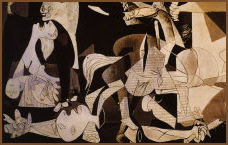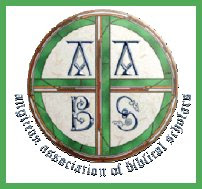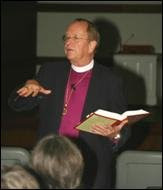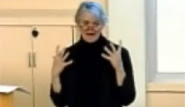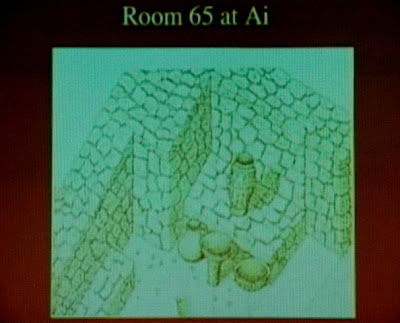
This mp3 music file is truly worth downloading! VTS's own Adam Thomas composed and performed this song near the conclusion of my summer Hebrew course. It is a spectacular humorous celebration of the joys and struggles of Beginning Biblical Hebrew. Thanks so much for this gift, Adam!
To download the free mp3 music file, right-click
here and then click: "save target as..."
Here are the actual lyrics:
The Aleph has Quiesced, by Adam Thomas
The entire class is stressed ‘cause the aleph has quiesced
And we never would have guessed that the Masoretic text
Has so many dots and squiggles that we’re all reduced to giggles
Like we’re all on laughing gas.
We try to learn a way to find every dagesh forte
mappiq in ending-He and which of the shewas to say
There are no letter vowels and so many sound like growls
That we wonder if we’ll pass.
Woah-oh...Woah-oh...
Our glottal stops are wrong and our Pe’s are poorly drawn
The tetragrammaton has all its vowels gone
Some compensatory lengthening,
add a doubling dot for strengthening
See that wandering dagesh left.
The article has hid, squeezed out by that lamed
And the furtive pathah slid, from left to right it did
All we do is stammer when we try to use this grammar
We’re feeling quite bereft.
A king, the king, to a king, to the king, let’s sing,
did you bring your Weingreen?
My horse, your horse, male horse, female horse,
this course is the source of bad dreams!
In Hebrew without fail, the words all start off male
And the vowels look like Braille,
it makes us want to wail
This language when created was triliteral agluttonated
And the roots are so hard to find
We’re all going insane when we add the construct chain
And double up on Bane, oh pronouns are a pain
We’re getting quite obsessive about which one is possessive
In our daily Hebrew grind.



